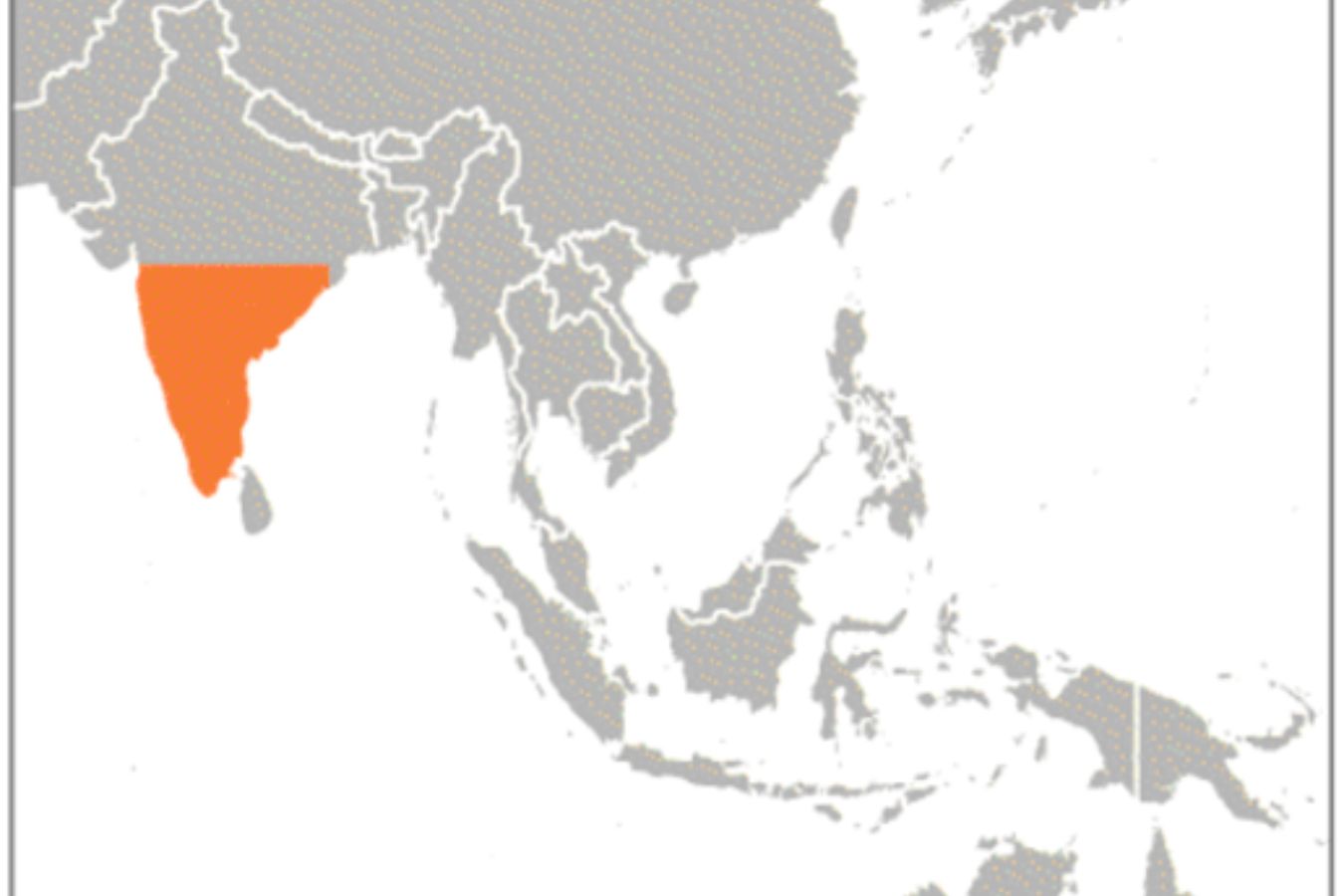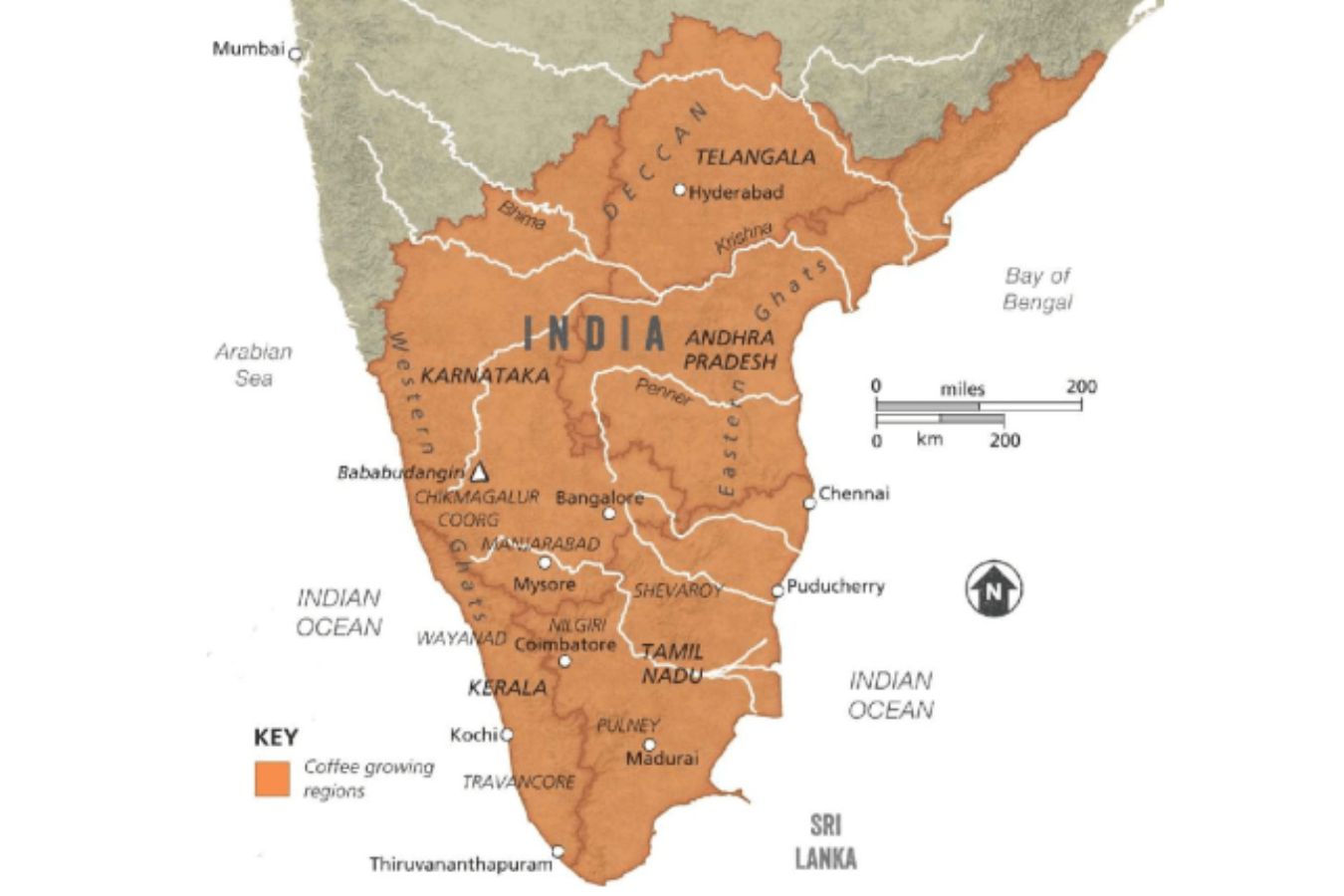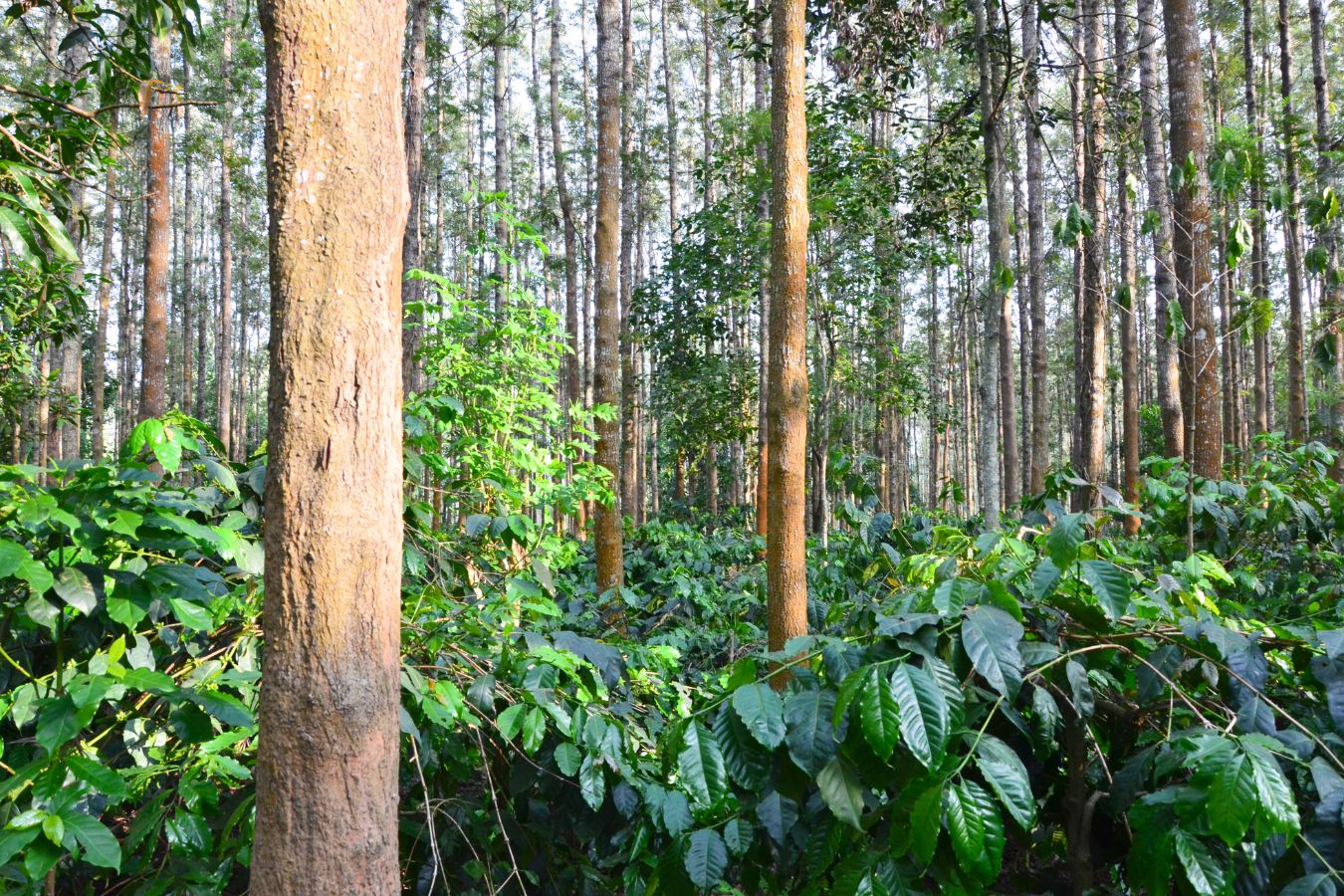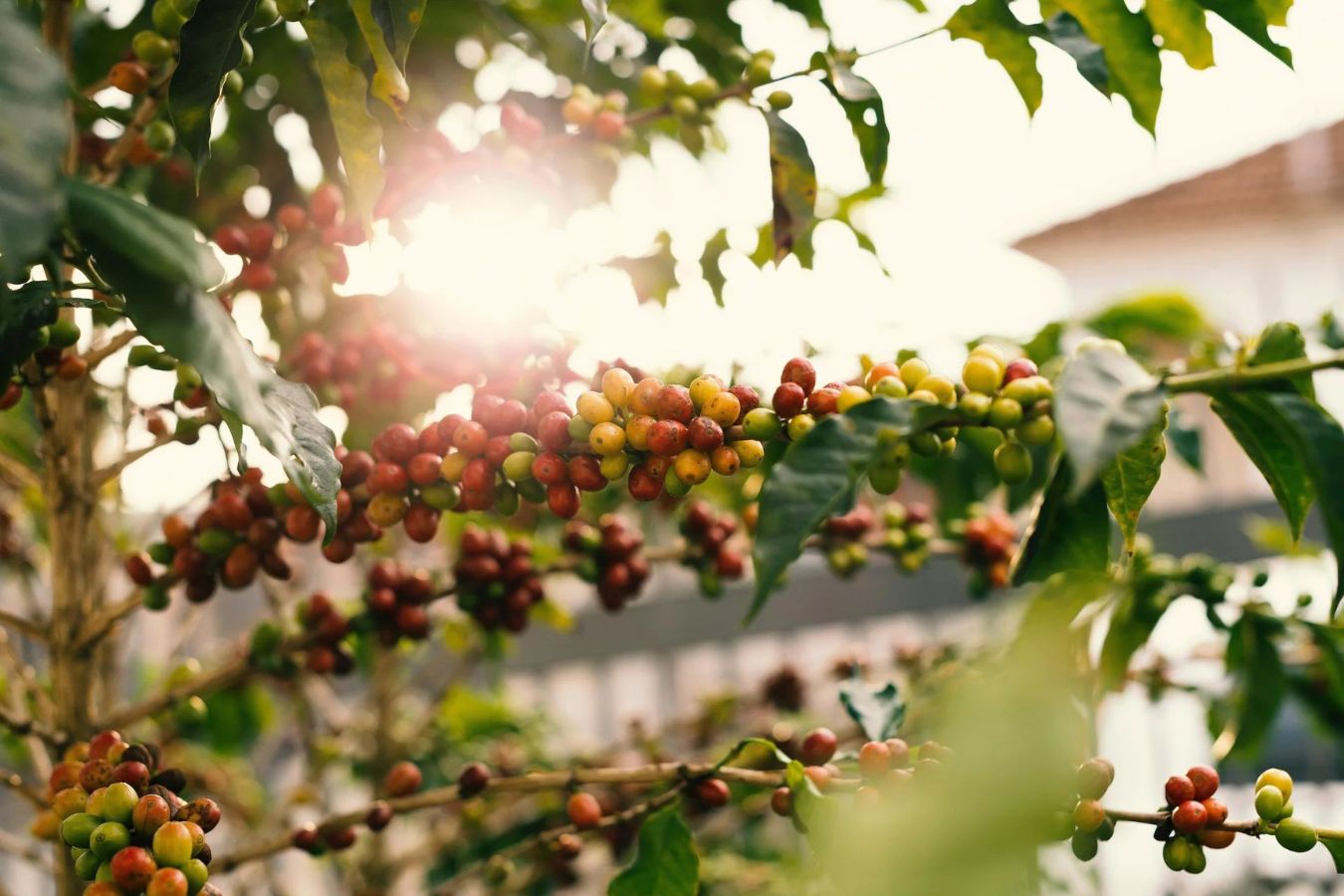
Coffee Origins: India – The origins of coffee production in southern India are entwined with myth. The story goes that a pilgrim named Baba Budan passed through Yemen in 1670 while returning from Mecca and smuggled out seven coffee seeds, the export of which was strictly controlled. Because he took seven, a sacrosanct number in Islam, it was considered a religious act.
This article will focus on introducing the coffee origins of India.
Coffee Origins: India
These initial seeds were sown by Baba Budan in what is now known as the Chikmagalur area of Karnataka, and they flourished there. Bababudangiri, the hills that retain his name, is still a significant coffee-growing region. Coffee plantations in southern India did not begin to grow until the middle of the nineteenth century, under British colonial control.
This was short-lived, and coffee’s popularity began to dwindle once more. The business suffered in the 1870s as a result of rising tea demand and an increase in the prevalence of leaf rust, which damaged coffee trees. Many estates, paradoxically, that had been successful in exporting their coffee, shifted to tea cultivation.

Leaf rust, on the other hand, did not drive coffee out of India but rather prompted the development of rust-resistant varietals. Although this was before the flavor of the coffee was regarded to be highly essential, the study was very effective, and several new types were produced.
In 1942, the Coffee Board of India was created, by way of a government act that began the regulation of the industry. Some argue that by pooling coffees from many producers, the government reduced incentives for producers to improve the quality of their coffee. However, the production certainly grew and in the 1990s India’s output increased by an astonishing thirty percent.
During the 1990s, regulations limiting how and where coffee farmers may market their products were also relaxed. India’s domestic coffee market increased at a quick pace as well. While India’s per capita consumption of coffee is low, tea is a far cheaper alternative, and the country’s population is vast enough that overall consumption is significant.
Although each individual consumes just 100g (312oz) of coffee per year, two million bags of coffee are consumed annually. India produces little over five million bags in total, with Robusta accounting for the bulk.

Robusta is, in many ways, better suited to India than Arabica. The lower altitudes and climate make Robusta yields high. More care and attention is paid to the production of Robusta in India than in most other countries so it occupies the premium end of the market.
Even the best Robustas still carry the distinctive woody flavors of the species, but the relative lack of unclean flavors in Indian Robustas makes them popular with roasters who still like Robusta in their espresso blends.
Monsooning
Monsoon Malabar is one of India’s most well-known coffees, and it’s made using a unique method known as ‘monsooning.’ Monsooning is today a well-managed operation, yet it all started by chance.
Coffee was carried in wooden boxes from India to Europe under the British Raj and was thus susceptible to the rainy weather that occurred during the monsoon months. The raw coffee absorbed a lot of moisture, which had a big impact on the cup of coffee that resulted.
As export practices improved, the demand for this unusual coffee still remained so the process was recreated in factories along the west coast. Monsooning is only done with naturally processed coffees; the raw coffee looks very pale afterward and is somewhat brittle.

Monsooned beans are difficult to roast evenly, and their brittle nature means that a bag of roasted coffee often contains lots of beans that have been damaged in the packing process. This is nothing to worry about, however, and is not the same thing as low-grade coffees that contain broken pieces in them and should be avoided.
During the monsooning process, coffee usually loses its acidity, but often gains pungent, wild flavors that make it somewhat divisive in the coffee industry. Some love the richness and intensity of the cup, while others believe the flavors are the result of defective processing and are very unpleasant.
Traceability
Because 98 percent of India’s 250,000 coffee producers are small growers, it is often difficult to find coffees traceable down to a single estate. However, these are often worth seeking out. Traceability may only be possible back to the point of processing or to a specific region.
Grading
Indian coffees are graded in two different ways. The Ārst is unique to India, and classiĀes all washed coffees as ‘Plantation Coffees’, all naturally processed coffees as ‘Cherry’, and all washed Robusta coffees as ‘Parchment Coffees’.
India also uses a size-based grading system, from AAA (the largest), down through AA, A, and also PB (peaberry). As in many other countries that use a size system, the larger bean sizes are associated with higher quality but this is not necessarily true.
TASTE PROFILE: The best coffees from India tend to be heavy, creamy, and low in acidity, but rarely particularly complex.
Growing Regions
Population: 1,326,572,000
Number of 60kg (132lb) bags in 2016: 5,333,000
Most of India’s coffee is grown in four main states, each of which can be subdivided into a number of smaller geographic regions.
Tamil Nadu
Tamil Nadu (which translates simply as ‘land of the Tamils’) is the southernmost of India’s 28 states. The capital city is Chennai (formerly Madras), and the region is famous for its monumental Hindu temples.
Pulley
This is the largest area of coffee production in the state. There are a number of challenges here for the coffee growers, including a high incidence of leaf rust (which determines the choice of varieties to grow), labor shortages, absentee ownership, and a scarcity of water for post-harvest processing.
| Altitude:
Harvest: Varieties: |
600-2,000m (2,000–6,600ft)
October–February S795, Selection 5B, Selection 9, Selection 10, Cauvery |
Nilgiri
Many growers in this mountainous region are tribal and have smallholdings with Financial constraints. This region produces around twice as much Robusta as Arabica and struggles with high rainfall and many different kinds of pests, including coffee berry borer. It is the westernmost of the growing regions, bordering Karnataka and Kerala.

| Altitude:
Harvest: Varieties: |
900-1,400m (3,000–4,600ft)
October–February S795, Kent, Cauvery, Robustas |
Shevaroy
This region produces almost exclusively Arabica. Most of the farmers in the region are smallholders, but the distribution of land is skewed in favor of larger farms. Only 5 percent of the farms occupy around 75 percent of the land under coffee.
One of the problems with large farms in the area is the trend towards monocultures of trees used to shade the coffee, silver oak being extremely common here. Many consider that a diverse range of shade trees is important for biodiversity and sustainable production.
Altitude: 900-1,500m (3,000–4,900ft)
Harvest: October–February
Varieties: S795, Cauvery, Selection 9
Karnataka
This state produces the majority of the nation’s coffee. It used to be known as Mysore but was renamed Karnataka in 1973. The meaning of the name is not completely agreed upon, opinion is divided between ‘elevated lands’ and ‘the black region’, the latter being a reference to the black cotton soil (vertisol) found in the area.
Bababudangiri
This region is considered the home of Indian coffee, where Baba Budan Ārst planted the seeds he smuggled from Yemen.
| Altitude:
Harvest: Varieties: |
1000-1,500m (3,300–4,900ft)
October–February S795, Selection 9, Cauvery |
Chikmagalur
This is a larger region that encompasses Bababudangiri within it. It is centered around and named for, the city of Chikmagalur. The region produces slightly more Robusta than it does Arabica.
| Altitude:
Harvest: Varieties: |
700-1,200m (2,300–3,900ft)
October–February S795, Selection 5B, Selection 9, Cauvery, Robustas |
Coorg
Many plantations in this region were started by the British in the 19th century, then sold to the locals when India gained independence in 1947. Nearly twice as much land here is used to grow Robusta as Arabica so, with its higher yield, nearly three times as much Robusta as Arabica is produced in the region.
| Altitude:
Harvest: Varieties: |
750-1,100m (2,450–3,600ft)
October–February S795, Selection 6, Selection 9, Robustas |
Manjarabad
This area is more focused on Arabica, although several of its estates have been recognized for the quality of their Robustas through competitions run by the Coffee Board of India.
| Altitude:
Harvest: Varieties: |
900-1,100m (3,000–3,600ft)
October–February S795, Selection 6, Selection 9, Cauvery |
Kerala
This southwestern state produces just under one-third of the total Indian coffee production. It is home to the Malabar coast, and therefore the Monsooned Malabar coffee, and organic coffee production has had greater success in this region than any other. The export of spices began here in the 1500s, which brought the Ārst Portuguese to the region and established a trade route that would pave the way for the European colonization of India.
Travancore
This region grows mostly Robusta, although some Arabicas are produced at higher altitudes.
| Altitude:
Harvest: Varieties: |
400-1,600m (1,300–5,200ft)
October-February S274, Robustas |
Wayanad
The low altitude in this part of India really only lends itself to Robusta production.
| Altitude:
Harvest: Varieties: |
600-900m (2,000–3,000ft)
October-February Robustas, S274 |
Andhra Pradesh
The Eastern Ghats mountain range runs along the east coast of India, providing the necessary altitude for coffee. Only a relatively small amount of coffee is produced in this region, though the majority is Arabica.
| Altitude: Harvest: Varieties: | 900-1,100m (3,000–3,600ft) October-February S795, Selection 4, Selection 5, Cauvery |
More: Coffee Origins Indonesia